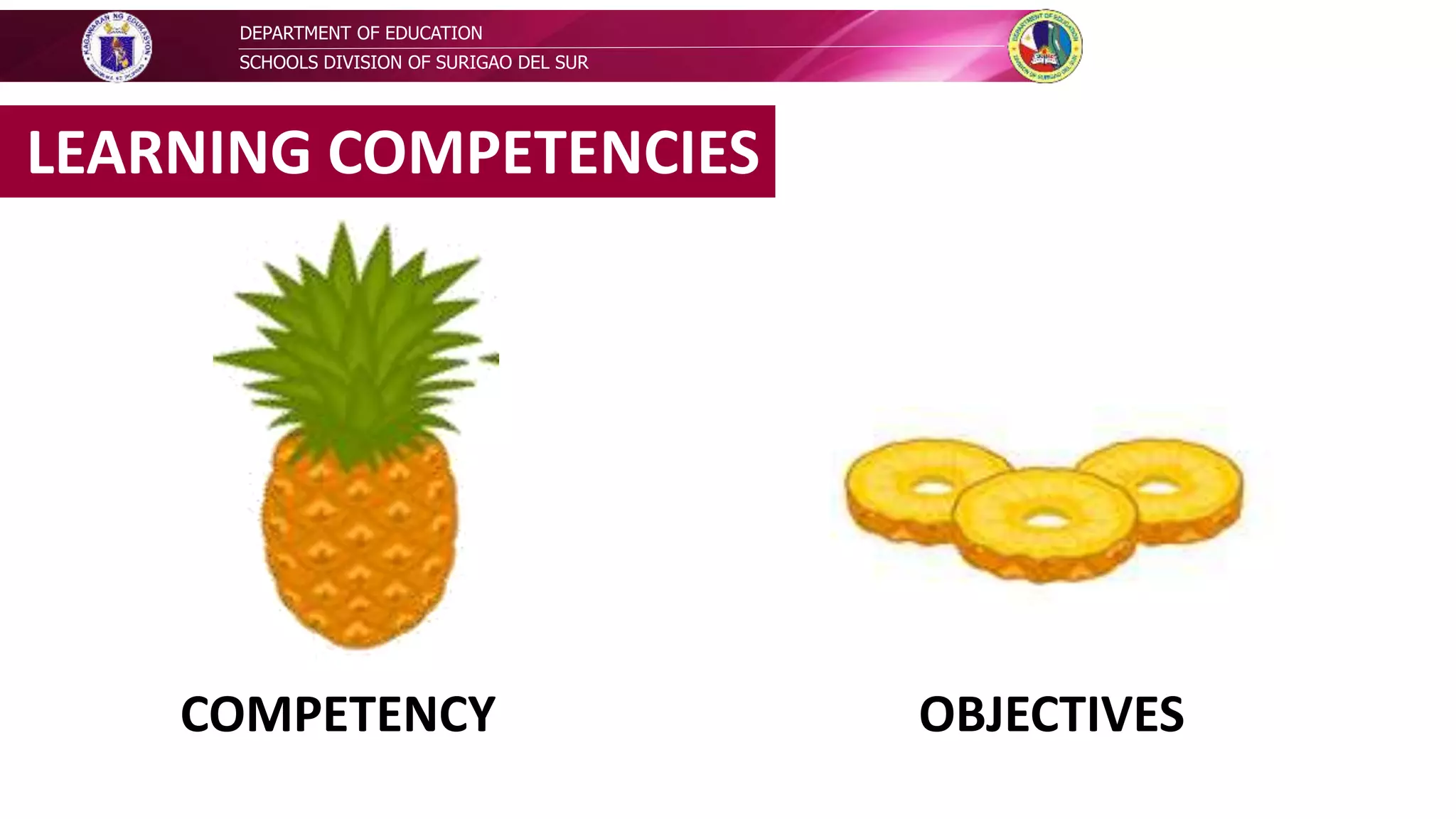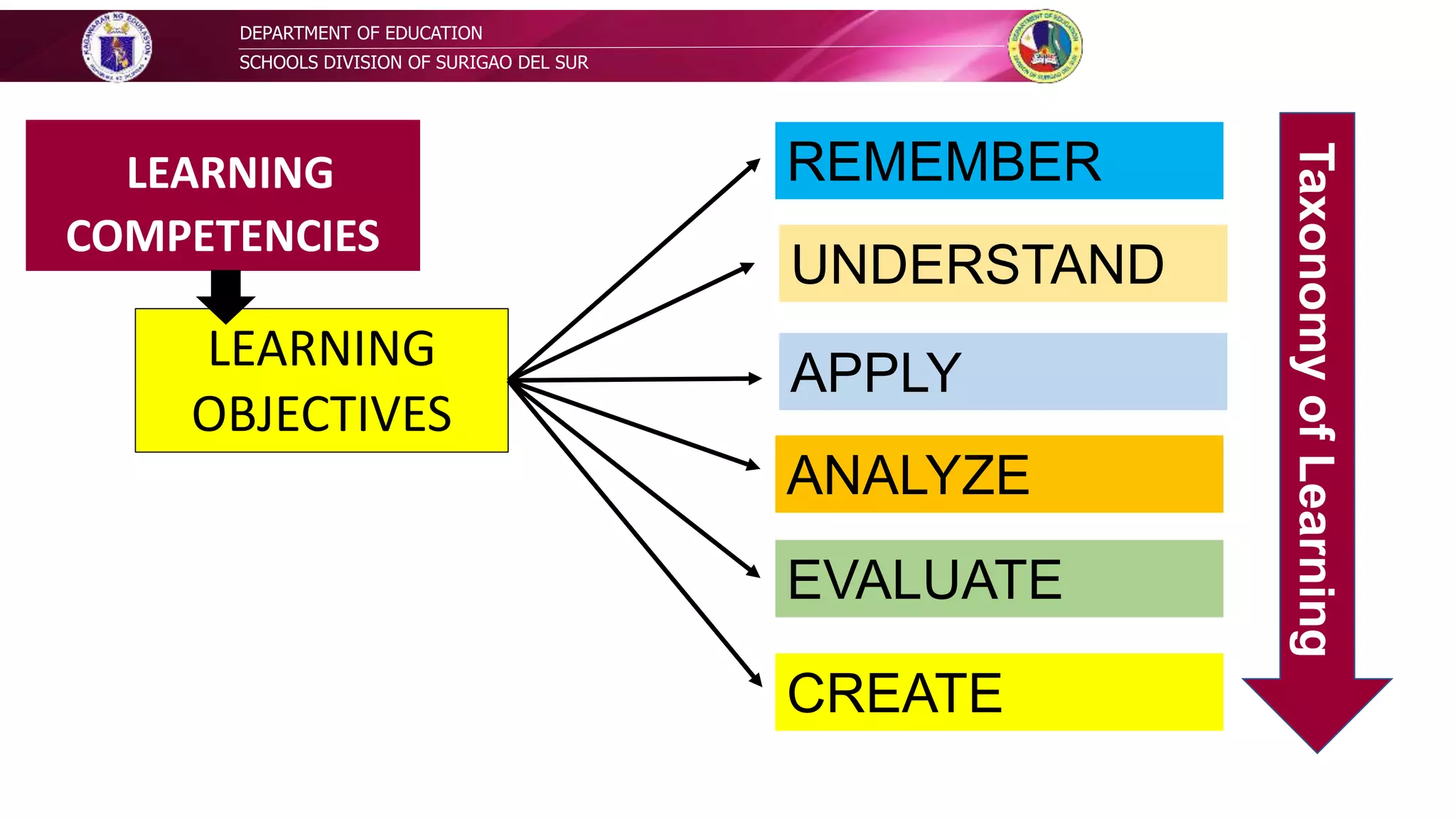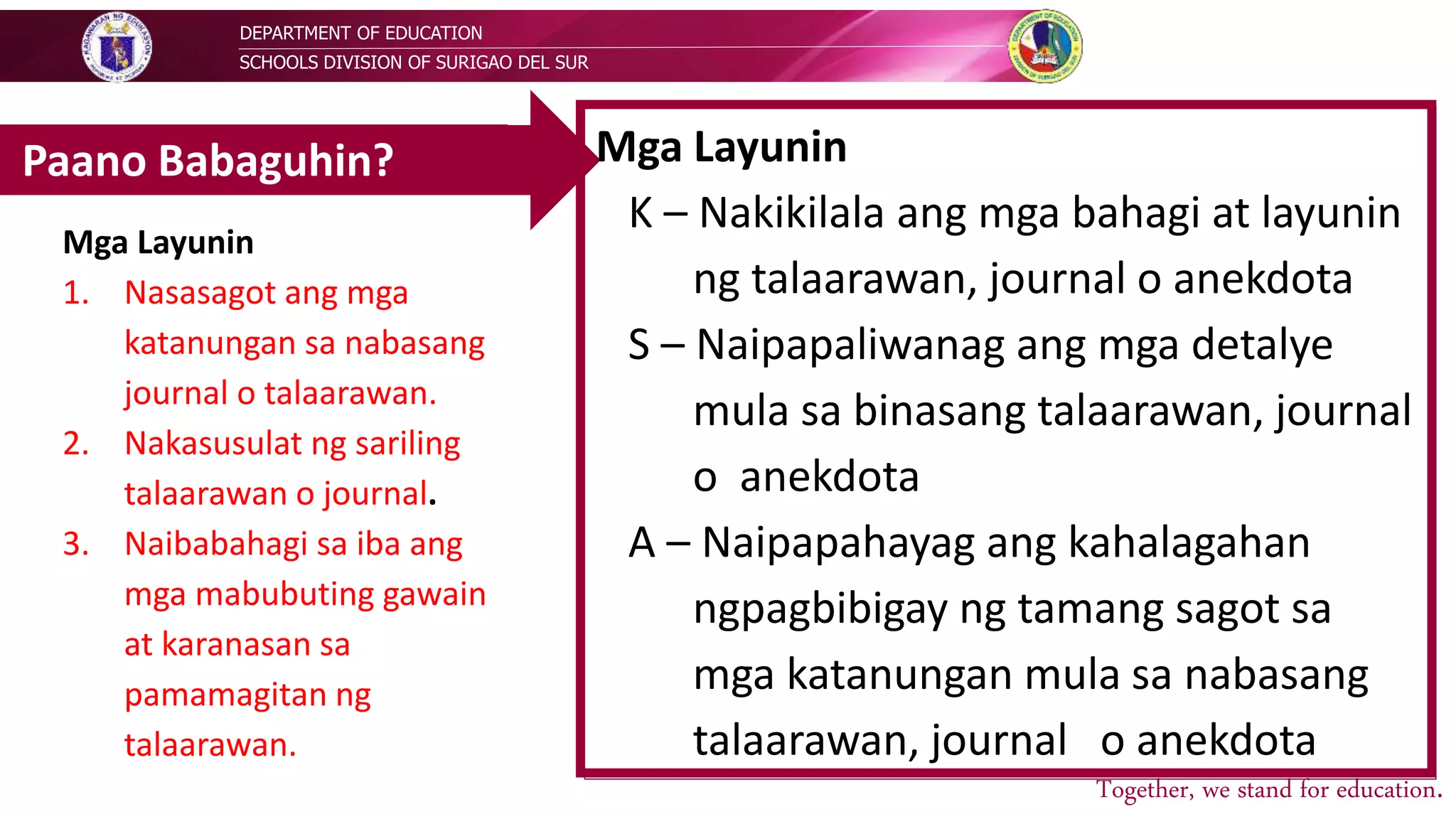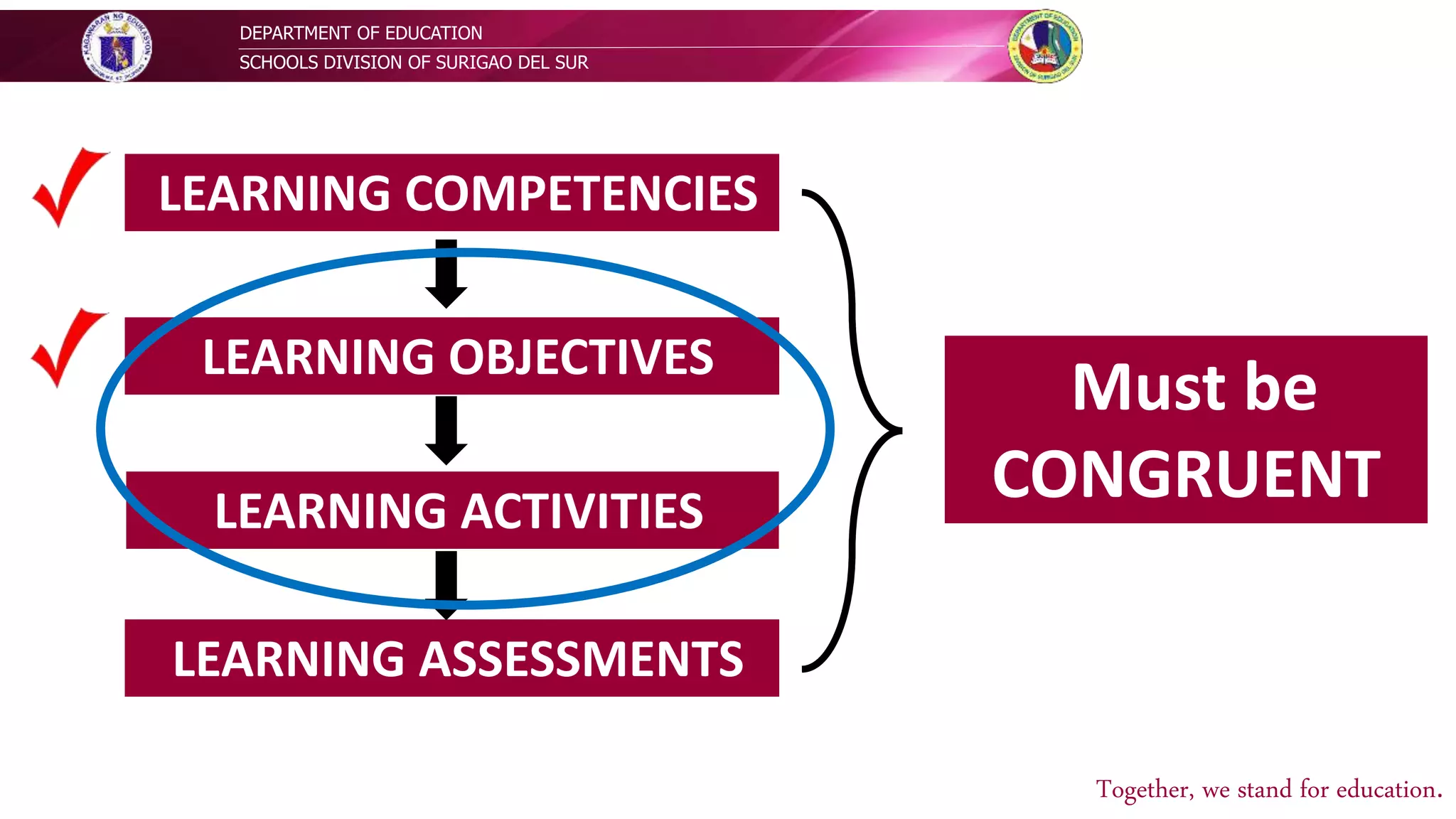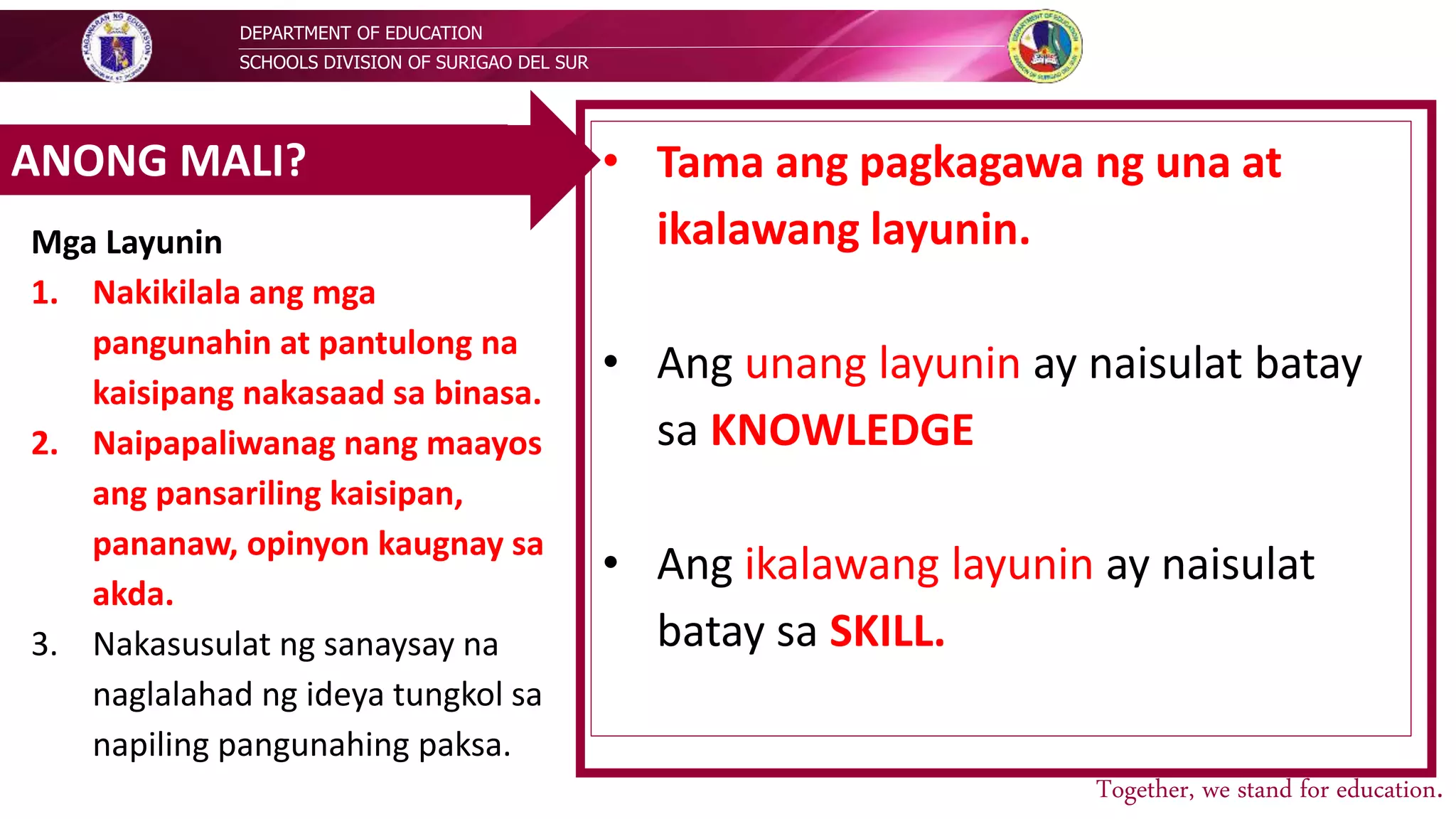Ang dokumento ay tumutukoy sa pagsasalin ng mga kakayahan sa mga layunin ng Kagawaran ng Edukasyon sa Surigao del Sur, na naglalarawan ng mga antas ng pagkatuto at mga layunin na dapat matamo ng mga mag-aaral. Tinalakay nito ang pagkakaiba ng mga layunin at kakayahan, kung saan ang mga layunin ay dapat na tiyak, nasusukat, at nakasulat sa mga terminong ugali (KSA). Binibigyang-diin ng dokumento na ang mga layunin at mga gawain sa pagkatuto ay dapat na magkatugma at hindi dapat maging pamantayan para sa pagbibigay ng marka.

